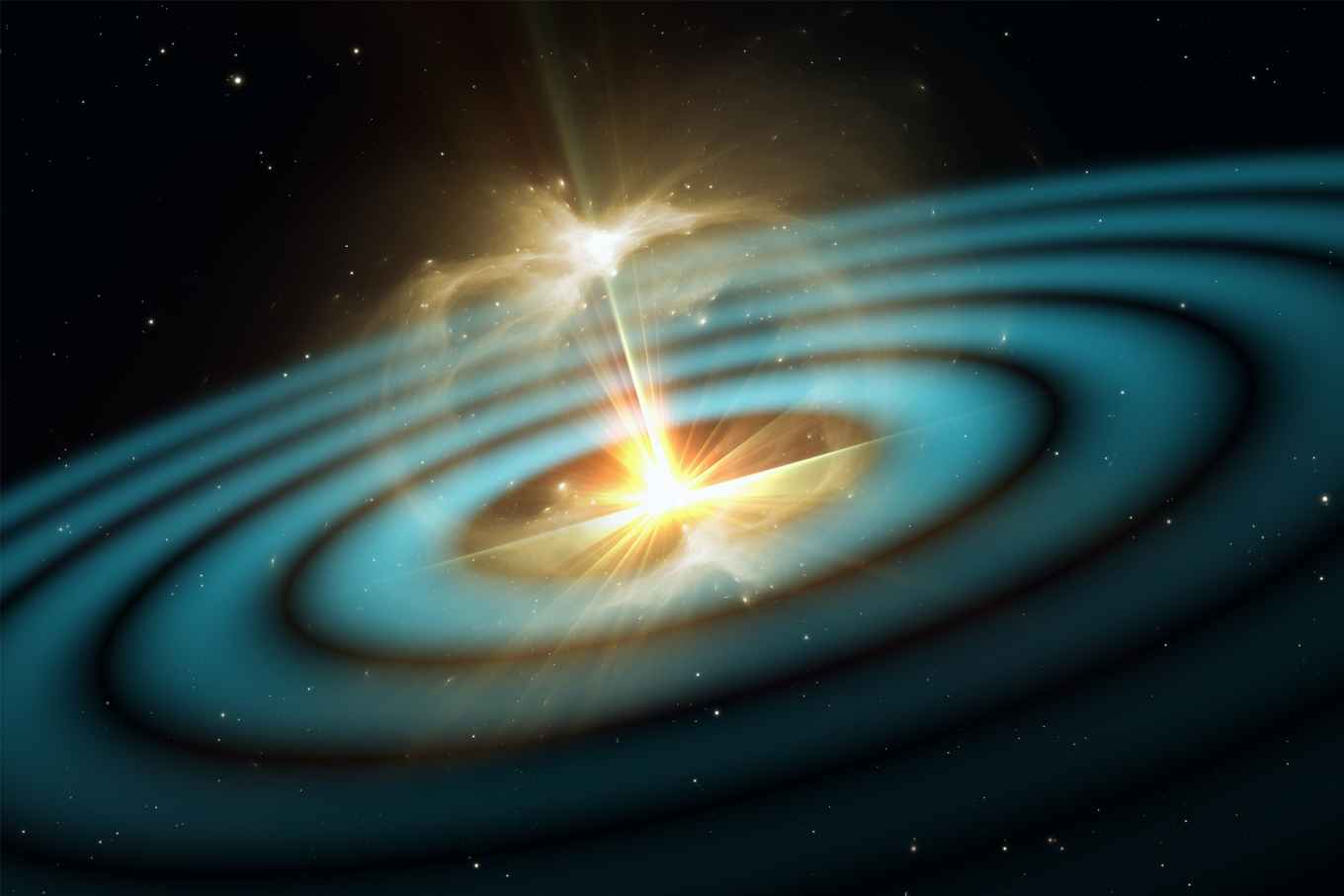Gravitational wave reveals expansion rate of the universe
8 July 2019

Astronomers are certain that the universe is expanding. But the question is how fast. Scientifically, the expansion rate of the universe is under discussion, since various measurements suggest different values.
In August 2017, the major LIGO / Virgo detectors in the US and at Pisa, Italy, registered gravity wave GW170817. This vibration in spacetime appeared to come from two clashing neutron stars, that also emitted radio waves. Radio telescopes were able to catch the waves coming from the collision for months. Using this data, researchers now mapped the properties of the jet associated with this event; a stream of energy and matter that is launched in the neutron star collision.
Hubble constant
Thanks to the properties of the jet, the researchers were able to calculate the expansion rate of the universe. According to these latest calculations the expansion rate, also known as a Hubble constant, lies between 65 and 75 km/s/Mpc.
That is within the bandwidth determined by two tried and tested standard methods. However, these standard methods have become increasingly accurate and at the same time diverged so far from each other since April 2019 that it is a mystery to astronomers. According to the Planck method, the expansion rate is 67 km/s/Mpc. The Cepheid method sets the Hubbel constant at 74 km/s/Mpc.
The gravitational wave researchers think they still need about 15 pairs of clashing neutron stars with good jets to really solve the dispute between the Planck followers and the Cepheid followers.
Linked radio telescopes
Samaya Nissanke, affiliated with the University of Amsterdam, Nikhef and the Radboud University, explains that the most important current finding is that we can map the characteristics of the jet that originates from clashing neutron stars with linked radio telescopes. ‘This is something I had already predicted that in 2010 on the basis of theory and simulations. And now it has proved successful in practice,’ says Nissanke. She calls the study a wonderful example of multi-messenger astronomy: ‘You can clearly see the power of the combination of LIGO / Virgo with data from radio astronomy.’
Publication
Read the full article in Nature Astronomy: www.nature.com/articles/s41550-019-0820-1